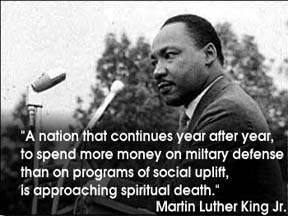“In their own words…”
Guest columnist: Andrea Rosen
Topic: McMillan Park & the Historic Preservation Review Board
On January 29, the Historic Preservation Review Board held hearings on two matters concerning historic landmark McMillan Park: one, regarding its subdivision (HPA 15-133); and the other pertaining to a new, larger design for a residential mixed-use building (HPA 15-090).
I submitted testimony regarding the subdivision, which I am posting here in revision.
As someone untrained in law and the doublespeak that is part and parcel of that profession, I continue to believe that the proposals put forth by the Office of the Deputy Mayor for Planning and Economic Development and Vision McMillan Partners for the McMillan Park Reservoir historic district are illegal. It boggles the mind that HPRB continues to consider and rule on the intensive redevelopment of McMillan Park, given its own finding in 2013 that the proposed demolition required by the redevelopment master plan is “inconsistent with the purposes of the Preservation Act, as it will result in the demolition of important character-defining features of the McMillan Park Reservoir landmark.” To build a case that the demolition and development should go forward on the shifting sand of such a finding inexorably brings to mind the phrase “house of cards.”
Historic Preservation Office staffer Steve Callcott at least partially recognizes this inherent contradiction in his report on DMPED and VMP’s application to subdivide the McMillan Sand Filtration Site, which he describes as
“a single unified site that still maintains its original boundaries and site organization.” Like the proposed demolition of the underground cells, the subdivision of Lot 801 “into multiple parcels for the purpose of redevelopment is not . . . compatible with the goal of retaining and enhancing the landmark.”
Looking for precedents in rulings by the Mayor’s Agent on subdividing historic sites that were “single unified site[s] that still maintain [their] original boundaries and site organization,” Mr. Callcott comes up with only one, Tregaron, the 20-acre early 20th-century estate in Cleveland Park that, like McMillan, is listed on the National Register of Historic Places. But there any similarity between plans for the two properties ends.
The Mayor’s Agent approved the development of Tregaron, according to Mr. Callcott, because “the conceptual proposal was exemplary in terms of its architecture and land use planning.”
At Tregaron, the 20-acre landmark was divided into two large lots: One lot, of six acres, is home to the several buildings of the Washington International School. On the remaining 14 acres are three single-family residences built on established streets (two on Macomb Street; one on Klingle Road), clustered on a single acre hugging the property’s edge; and 13 acres never to be developed, where the historic parkland is being restored.
Thus 65 percent of the original 20 acres is preserved as contiguous green space; the remainder is subject to low-density development. Now that’s a project of special merit consistent with the Preservation Act and the Comprehensive Plan!
At McMillan, about 6 contiguous acres out of 25 acres of open space (less than 24 percent) are retained, at the southern end of the site. One does not need training in historic preservation or architecture to see at a glance by comparing VMP’s renderings with photographs of McMillan as it stands, largely unchanged except for the absence of trees (shorn by our city government), that the intensive development of the remainder of the McMillan Sand Filtration site obliterates the site’s defining characteristics above ground, and—as has already been established–below ground.
“[T]he subdivision of the McMillan Sand Filtration Site is incompatible with the character of the landmark ,” to again quote Mr. Callcott’s report, and furthermore, it is inconsistent with the purposes of the Historic Landmark and Historic District Protection Act, which are “to retain and enhance historic landmarks in the District of Columbia.” To first demolish more than 80 percent of the subterranean structures that won the protections of the Preservation Act, and then to build on almost 80 percent of the open space that is a defining characteristic of the 25-acre greensward, cannot be “consistent”—or in Zoning Commission-ese, cannot be “not inconsistent”–with the Preservation Act. To describe it as such would be Orwellian. The Board should take a field trip to McMillan and kick a ball across an acre or so. The great open spaces are pure exhilaration, and not to be replicated or even sensed at VMP’s 1960s-era planned community.
So I must take issue with Mr. Callcott’s recommendation that despite the incompatibility with its character of subdividing the landmark, the HPRB ought to reconfirm to the Mayor’s Agent that design choices mitigate this incompatibility.
Such a position strikes me as akin to admiring the clothes of the naked emperor. It seems that only in the tripartite division of the site, consisting of, from south to north: (1) lawn; (2) low-, medium-, and now, high-rise buildings; and (3) high-rise “medical” office buildings, can real-estate development boosters use jargon to paper over the fact that nothing will be left of the historic McMillan site. (As someone trained in Art History, I know how verbiage can be convincing even when it’s empty.) Our HPRB apparently considers the continued use of such terminology a real triumph in historic preservation. But those who know the iconic place now will not recognize it after VMP is done with it. People who have not had a chance to visit will have no clue what preceded VMP’s suburban outcropping.
The HPRB should not act as an arm of DMPED, despite its misbegotten position in the hierarchy of that office. I urge the Historic Preservation Review Board to remember its regulatory function as steward of the District of Columbia’s tangible history and to deny the subdivision of McMillan Sand Filtration Site.
“In their own words…”
Guest columnist: Andrea Rosen

